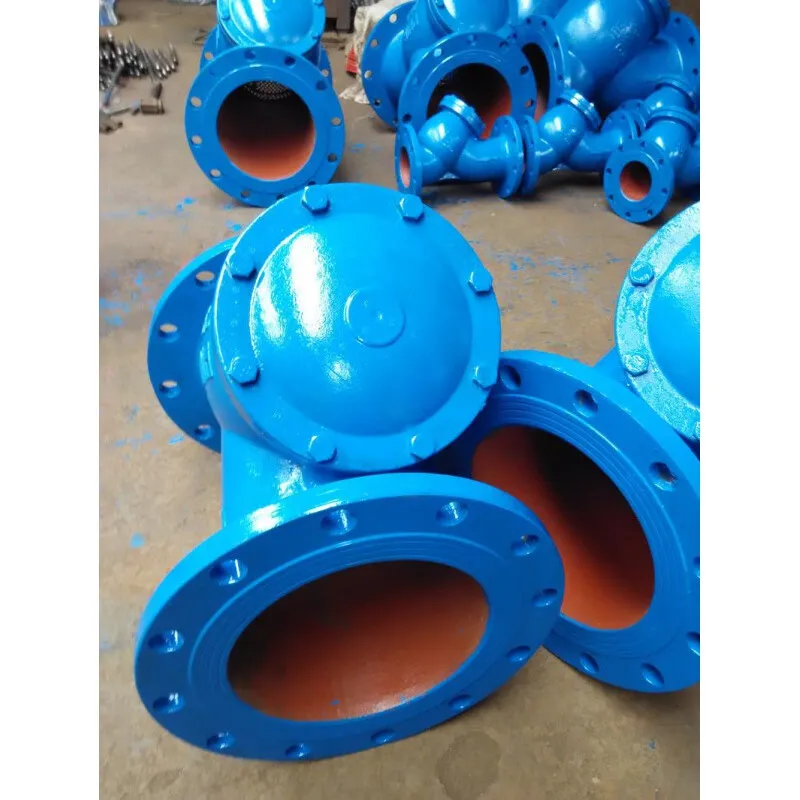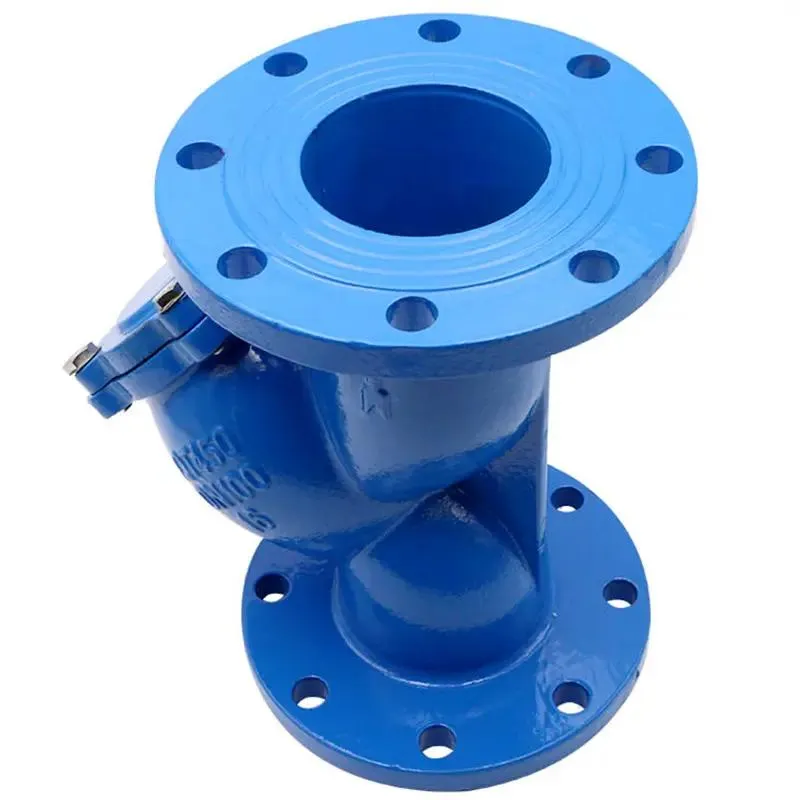Jun . 13, 2025 10:50 Back to list
Flanged Strainer Use in Marine Environments
Marine environments pose unique challenges for industrial equipment, from relentless saltwater corrosion to high-pressure systems and fluctuating temperatures. In such demanding conditions, filtration systems like Y type strainers, flanged strainers, and cast iron Y strainers play a critical role in ensuring operational efficiency and longevity. This article explores how these specialized strainers thrive in marine applications, their advantages, and why they are indispensable for offshore and maritime industries.

Understanding the Role of Y Type Strainers in Marine Applications
Y type strainers are among the most widely used filtration devices in marine settings. Named for their Y-shaped configuration, these strainers excel at removing debris, sediment, and particulate matter from fluids flowing through pipelines. In marine environments, where seawater, fuel, and lubricants must remain uncontaminated, Y type strainers act as the first line of defense against system blockages.
Key Features for Marine Use
Corrosion Resistance: Marine-grade materials like stainless steel or coated cast iron Y strainers resist saltwater-induced corrosion.
High Flow Capacity: The Y-shaped design minimizes pressure drop, ensuring efficient fluid flow even in high-volume systems.
Ease of Maintenance: A removable screen or basket allows quick cleaning without disassembling the entire pipeline—a crucial feature for ships and offshore platforms with limited downtime.
In marine cooling systems, for example, Y type strainers prevent seaweed, sand, and marine organisms from clogging heat exchangers. Their compact design also makes them ideal for confined engine rooms or bilge systems.

The Advantages of Flanged Strainers for Offshore Systems
Flanged strainers are engineered for robustness, making them a staple in marine and offshore installations. Their defining feature—a flanged connection—ensures a secure, leak-proof seal between the strainer and adjacent piping. This is particularly valuable in marine environments, where vibrations from engines and wave motion can loosen fittings over time.
Why Flanged Strainers Excel at Sea
Durability Under Pressure: Flanged connections distribute stress evenly, reducing the risk of cracks or leaks in high-pressure seawater pipelines.
Versatility: Compatible with pipes of various sizes, flanged strainers are used in ballast systems, fuel transfer lines, and firefighting systems on ships.
Easy Integration: The flanged design simplifies installation and replacement, even in hard-to-reach areas of a vessel.
For offshore oil rigs, flanged strainers are often paired with cast iron Y strainers to handle abrasive fluids like drilling mud. The combination ensures uninterrupted operations while protecting pumps and valves from wear.
Why Choose a Cast Iron Y Strainer for Marine Environments?
When cost-effectiveness and durability are priorities, cast iron Y strainers emerge as a top choice for marine applications. Cast iron’s inherent strength and resistance to deformation make it suitable for heavy-duty use, while protective coatings enhance its corrosion resistance.
Benefits of Cast Iron Y Strainers
Cost Efficiency: Cast iron is more affordable than stainless steel, offering a budget-friendly solution without compromising performance.
Thermal Stability: These strainers withstand extreme temperature fluctuations common in marine engine rooms.
Longevity: When properly maintained, a cast iron Y strainer can last decades, even in saltwater environments.
In desalination plants or shipboard wastewater systems, cast iron Y strainers filter out large particulates before fluids enter sensitive treatment units. Their rugged construction also makes them ideal for harbor dredging equipment, where sand and silt are prevalent.
Frequently Asked Questions About Y Type Strainers, Flanged Strainers, and Cast Iron Y Strainers
What Are the Primary Advantages of a Y Type Strainer in Marine Systems?
Y type strainers offer minimal pressure loss, easy maintenance, and compatibility with corrosive fluids. Their compact design saves space, which is critical in marine environments where every inch matters.
How Does a Flanged Strainer Improve Safety on Ships?
The flanged connection prevents leaks, even under high vibration or pressure. This reduces the risk of system failure, protecting both equipment and crew.
Is a Cast Iron Y Strainer Suitable for Saltwater Applications?
Yes! With epoxy or galvanized coatings, cast iron Y strainers resist saltwater corrosion effectively. Regular inspections and cleaning further extend their lifespan.
Can Flanged Strainers Be Customized for Specific Marine Needs?
Absolutely. Manufacturers offer custom mesh sizes, materials, and flange dimensions to match the demands of different marine systems, from fuel filtration to ballast water management.
Why Should I Invest in a Cast Iron Y Strainer Over Other Materials?
Cast iron Y strainers provide an optimal balance of affordability and durability. They are ideal for applications where stainless steel is unnecessary but reliability is non-negotiable.
In the unforgiving marine environment, Y type strainers, flanged strainers, and cast iron Y strainers prove their worth daily. From safeguarding engines against debris to ensuring leak-free operations on choppy seas, these devices are vital for maritime safety and efficiency. By understanding their unique strengths, marine engineers and operators can make informed choices that enhance performance, reduce downtime, and extend the life of critical systems. Whether you’re managing a cargo ship, offshore platform, or coastal facility, investing in the right strainer technology is an investment in long-term success.
-
Thread Plug Gauge Requires Careful HandlingNewsJul.29,2025
-
Surface plate calibrationNewsJul.29,2025
-
Ring Gauge Ensures Machining AccuracyNewsJul.29,2025
-
Pad Iron Reinforces Anchor PointsNewsJul.29,2025
-
Ground anchor stabilizes embankmentsNewsJul.29,2025
-
Granite Box Maintains Precision FlatnessNewsJul.29,2025
Related PRODUCTS









